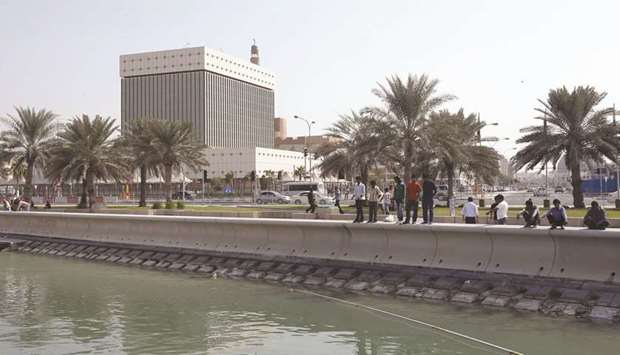Qatar’s long-term issuer ratings have been changed from negative to stable by Moody’s Investors Service, which affirmed the long-term issuer and foreign-currency senior unsecured debt ratings at Aa3.
According to Moody’s assessment, “Qatar can withstand the economic, financial, and diplomatic boycott by Saudi Arabia, the UAE, Bahrain, and Egypt in its current form, or with possible further restrictions, for an extended period of time without a material deterioration of the sovereign’s credit profile.”
“This assessment is in part based on evidence of broad resilience of Qatar’s credit metrics to the economic and financial blockade over the past 13 months,” Moody’s also said.
The rating affirmation at Aa3 takes into account a number of credit strengths embedded in Qatar’s credit profile which, in Moody’s view, remains supported by the large net asset position of Qatar’s government, exceptionally high levels of per-capita income, very large hydrocarbon reserves, and relatively low fiscal and external break-even oil prices — all of which will continue to provide a significant shock absorption capacity to the sovereign.
The senior unsecured rating of SoQ Sukuk A QSC was affirmed at Aa3.
According to Moody’s, the debt obligations of SoQ Sukuk A QSC represent debt obligations of Qatar’s government.
Qatar’s long-term foreign-currency bond and deposit ceilings remain unchanged at Aa3 and the short-term foreign-currency bond and deposit ceilings remain unchanged at P-1. Qatar’s long-term local-currency bond and deposit country risk ceilings also remain unchanged at Aa3.
“The stable outlook reflects Moody’s view that Qatar’s credit metrics will likely remain consistent with an Aa3 rating as the boycott continues. The stable outlook also makes provision for some additional restrictions and is supported by Moody’s view that a quick resolution or a significant escalation of the regional dispute materially affecting Qatar’s credit metrics are a low-probability event.”
Qatar’s Aa3 rating remains supported by a very large net asset position of the Qatari government, that Moody’s estimates at 137% of GDP at the end of 2017; exceptionally high levels of per-capita income ($61,282 in current US dollars and $124,529 on a purchasing power parity basis); and very large hydrocarbon reserves (including more than 140 years of natural gas production at the current rate).
Qatar’s rating is also supported by its moderate fiscal and external break-even oil prices, the oil price levels that would balance the government’s budget and the current account respectively.
According to the IMF, Qatar’s fiscal breakeven price is around $47/barrel for 2018 (when income from the SWF assets is included in revenue), while its external breakeven price is $57/barrel, both below current oil price levels and in line with Moody’s medium-term assumptions (around $45-65/barrel).
Furthermore, Moody’s expects that the fiscal breakeven price will decline by up to $20 over the medium term as the government halves its capital spending after the 2022 FIFA World Cup and raises LNG production by close to 30% from the new gas development in the North Field during 2023-2024.
As a result, Qatar’s government budget is likely to be broadly balanced or, in the medium term, in surplus, leading to a gradual decline in government debt from just under 50% of GDP in 2017 towards 40% of GDP early next decade.

A view of Qatar’s central bank building in Doha. According to Moody’s assessment, u201cQatar can withstand the economic, financial, and diplomatic boycott by Saudi Arabia, the UAE, Bahrain, and Egypt in its current form, or with possible further restrictions, for an extended period of time without a material deterioration of the sovereign’s credit profile.u201d
